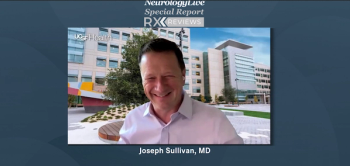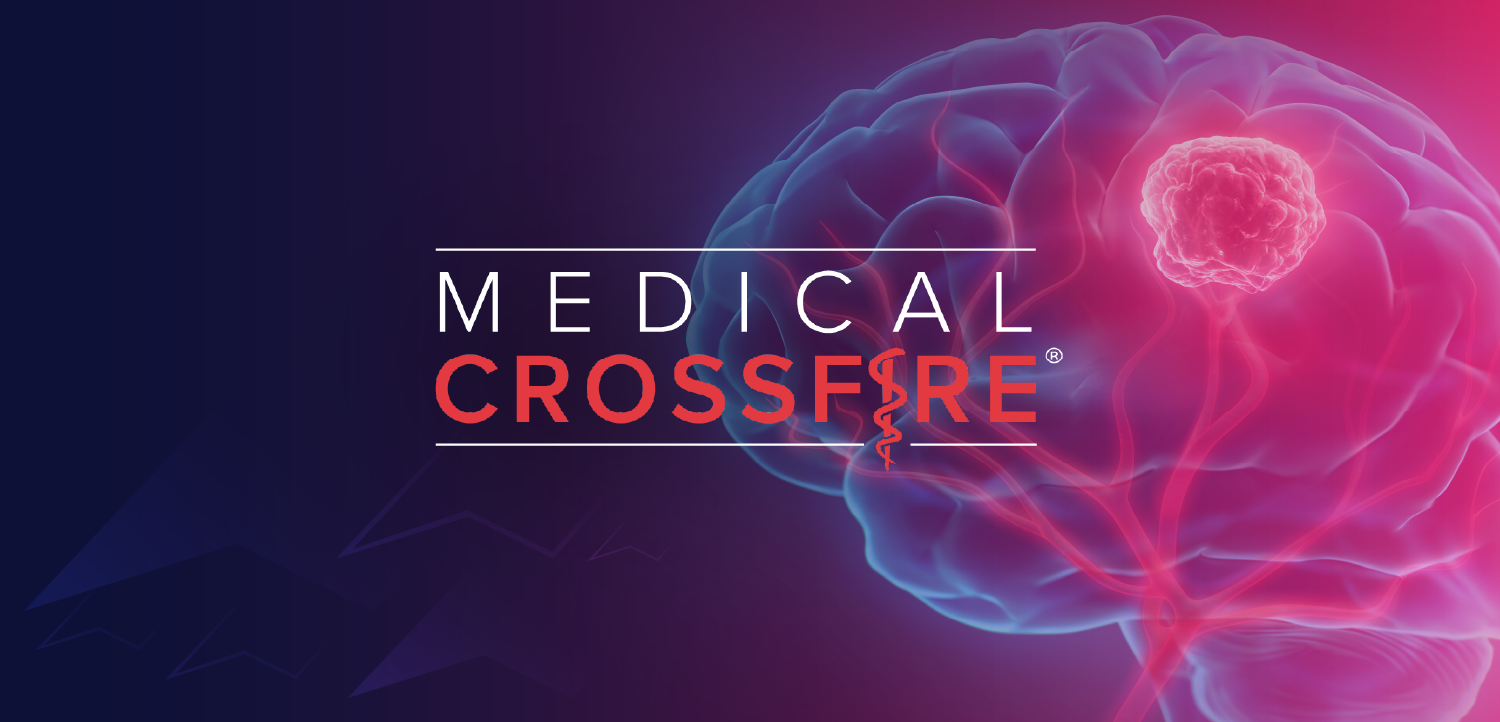
Spinal Muscular Atrophy and COVID-19: Guidance and Resources for Providers

Advocacy organization Cure SMA provides guidance for health care providers caring for patients with SMA during the ongoing COVID-19 pandemic.
Cure SMA
Spinal muscular atrophy (SMA) is an autosomal recessive neuromuscular disease characterized by progressive weakness of the skeletal and respiratory muscles.1-5 It is a disease that robs people of physical strength by affecting the motor nerve cells in the spinal cord, taking away the ability to walk, eat, and breathe. The predominant symptoms of
SMA is caused by a homozygous deletion of the survival motor neuron gene 1 (SMN1), and the associated reduction of full-length SMN protein that is critical to the function of motor neurons of the anterior horn.1 With the absence of SMN protein, motor neurons cannot properly function and eventually die, leading to the debilitating, progressive and, when untreated, fatal muscle weakness as described above.1-3 The presence of the survival motor neuron 2 (SMN2) “back-up” gene produces some, but insufficient, amounts of the fully functional SMN protein necessary for motor neuron function and survival. Variance in SMN2 copy number is inversely correlated with disease severity, and thus increased copies are associated with a milder phenotype.5-7 There are 4 primary types of SMA based on the age that symptoms begin and highest motor milestone achieved.5, 8-13
For additional information regarding SMA phenotypes, clinical presentation, and care management, please visit
Guidance for Health Care Providers Regarding the Impact of Coronavirus (COVID-19) on Individuals Affected by SMA
Although little is known regarding the immediate impact of COVID-19 on SMA, affected individuals are at higher risk of developing complications from viral respiratory infections.14 As such, members of the SMA community are encouraged to practice infection control and isolation. Despite the current strain on the healthcare system due to high rates of COVID-19 nationwide, it remains a high priority that people with SMA have access to the lifesaving treatments that are approved by the US Food and Drug Administration (FDA).15 Three SMN-enhancing treatments are currently available. Nusinersen (Spinraza; Biogen), an antisense oligonucleotide administered intrathecally, is approved for all types of SMA in pediatric and adult patients.16 To initiate treatment, 4 loading doses are completed within the first 2 months with subsequent administration of maintenance doses every 4 months.16 Onasemnogene abeparvovec-xioi (Zolgensma; AveXis), a gene-replacement therapy administered via intravenous injection, is approved for all types of SMA for children up to 2 years of age.17 Risdiplam (Evrysdi; Genentech), an orally administered small molecule SMN2 splicing modifier, was
Despite this urgency, the ongoing pandemic has impacted the delivery of treatment to individuals affected by SMA. In an effort to measure the impact of COVID-19 on the SMA community, Cure SMA launched a survey in tandem with offering support packages of supplies needed during the pandemic.24 As of June 1, 2020, 1513 individuals completed the COVID-19 survey, with the majority (65.2%) of these individuals being parents of an affected individual and 32% self-reporting as an adult with SMA.24 Although very few respondents acknowledged having been diagnosed with COVID-19 (0.34%), the pandemic has had a substantial impact on the ability for members of the SMA community to receive timely treatment or SMA-related care.24 More specifically, 37.8% had a healthcare provider (or clinic) cancel or delay an appointment for SMA-related care, and 42.2% had their SMA-related services (e.g., physical therapy) delayed or cancelled due to COVID-19.24 Also, about 1 in 5 individuals have had their healthcare provider (or clinic) cancel or delay an appointment for receiving their SMA treatment due to COVID-19 (FIGURE 1).24
FIGURE 1. Impact of COVID-19 on the Ability for Members of the SMA Community to Receive Timely SMA-Related Care or Treatment
To measure the impact of COVID-19 on the SMA community, Cure SMA launched a survey in tandem with a COVID-19 Support Package. Between April 7, 2020 and May 31, 2020, 1513 individuals with SMA, SMA caregivers, and SMA family members completed this survey regarding the impact of COVID-19 on their daily lives dealing with SMA.
Healthcare provider teams are encouraged to work with individuals affected by SMA and families to schedule SMA treatment administration to occur on time.15 Planning should include strategies to avoid possible COVID-19 exposure for this high-risk community, such as pre-registration, avoiding waiting rooms, and being placed in a procedure room shortly after arrival to the treatment facility.15
Additionally, the ongoing pandemic has significantly affected the delivery of pediatric care. The implementation of shelter-in-place and stay-at-home orders has led to a decline in well-child visit rates nationwide, ultimately causing delays in developmental screening and surveillance.25,26 In the absence of newborn screening for SMA, the clinical diagnosis of SMA relies heavily upon the recognition of early symptomatology by providers within the pediatric medical home. As part of ongoing monitoring of diagnostic rates nationwide, Cure SMA has noted a decline in clinical diagnosis since the declaration of emergency in March 2020 (FIGURE 2).
FIGURE 2. Cure SMA First Contact: Newly Diagnosed Per Month
This chart reflects number of newly diagnosed first contacts to Cure SMA since January 2019. Individuals are considered to be newly diagnosed if they have been diagnosed with SMA within the last year.
The diagnosis of SMA is a medical emergency. Although the full impact of COVID-19 on diagnostic delays in SMA remains unknown, providers are encouraged to remain vigilant and to promptly rule out SMA via
For additional information, please review Cure SMA's COVID-19 and SMA Webinar for Healthcare Professionals
Cure SMA’s Direct Support for Individuals and Families Affected by SMA
Quarantining is essential for individuals and families who live with SMA, many of whom are experiencing hardships due to the COVID-19 pandemic. In response, Cure SMA has launched 2 programs designed to help alleviate some of the financial burden for those in the SMA community.
- Cure SMA COVID-19 Assistance Program offers a $50 gift card to help with purchasing items such meals, groceries, or other essential supplies during the pandemic.
- Cure SMA COVID-19 Support Package is a temporary program to assist members of the SMA community obtain essential items that may be difficult to locate, such as hand sanitizer and antibacterial wipes. Additional items promoting family engagement, such as activity books and games, are also included.
Each program is extended to any household who has an individual diagnosed with SMA. Please note, there is a limit of one (1) gift card per household and cards are available on a first come, first serve basis as supplies last. Applicants must reside within the United States.
Cure SMA thanks our generous donors and sponsors, whose contributions make this effort possible. A special thanks to AveXis, Biogen, Genentech, and Ionis for their additional support of Cure SMA’s new COVID-19 Support Programs.
Cure SMA COVID-19 Information Center
Cure SMA continues to closely monitor the impact of COVID-19. While community engagement remains important, the health, safety, and well-being of the entire SMA community is our top priority. In an effort to provide accurate and timely information regarding the impact of COVID-19 on the SMA community, Cure SMA has developed a COVID-19 Information Center. The website houses a variety of resources for healthcare providers, individuals, and families affected by SMA. A list of provider resources to assist with ongoing management of patient care, including guidance for telehealth, recommendations for home-based ventilation patients, and advocacy letter templates are freely available on the page. Cure SMA has also provided a number of prepared and template letters for providers and families to support sustained treatment and flexibility in care delivery. For the latest in guidance, community resources, and care recommendations, please visit
About Cure SMA
Since 1984, Cure SMA has grown to be the largest network of individuals, families, clinicians, and research scientists working together to advance SMA research, support affected individuals/caregivers, and educate public and professional communities about SMA. The organization has directed and invested in comprehensive research that has shaped the scientific community’s understanding of SMA, led to breakthroughs in treatment and care, and provided individuals and families the support they need today. We are currently on the verge of breakthroughs that will strengthen bodies, extend life, and lead to a cure. To learn more, visit us at
REFERENCES
1. Lefebvre S, Burglen L, Reboullet S, et al. Identification and characterization of a spinal muscular atrophy-determining gene. Cell. 1995;80(1):155-165.
2. Wirth, B. An update of the mutation spectrum of the survival motor neuron gene (SMN1) in autosomal recessive spinal muscular atrophy (SMA). Hum Mutat. 2000;15(3):228-237.
3. Arnold, WD, Kassar D, Kissel JT. Spinal muscular atrophy: Diagnosis and management in a new therapeutic era. Muscle Nerve. 2015;51(2):157-167.
4. Kolb SJ, Kissel JT. Spinal muscular atrophy: a timely review. Arch Neurol. 2011;68(8):979-984.
5. Kolb SJ, Kissel JT. Spinal muscular atrophy. Neurol Clin. 2015;33(4):831-846.
6. Lefebvre S, Burlet P, Liu Q, et al. Correlation between severity and SMN protein level in spinal muscular atrophy. Nat Genet. 1997;16(3):265-269.
7. Feldkötter M, Schwarzer V, Wirth R, Wienker TF, Wirth B. Quantitative analyses of SMN1 and SMN2 based on real-time lightCycler PCR: fast and highly reliable carrier testing and prediction of severity of spinal muscular atrophy. Am J Hum Genet. 2002;70(2):358-368.
8. Zerres K, Rudnik-Schoneborn S, Forrest E, Lusakowska A, Borkowska J, Hausmanowa-Petrusewicz I. A collaborative study on the natural history of childhood and juvenile onset proximal spinal muscular atrophy (type II and III SMA): 569 patients. J Neurol Sci. 1997;146(1):67-72.
9. Wirth B, Herz M, Wetter A, et al. Quantitative analysis of survival motor neuron copies: identification of subtle SMN1 mutations in patients with spinal muscular atrophy, genotype-phenotype correlation, and implications for genetic counseling. Am J Hum Genet. 1999;64(5):1340-1356.
10. Wirth B, Brichta L, Schrank B, et al. Mildly affected patients with spinal muscular atrophy are partially protected by an increased SMN2 copy number. Hum Genet. 2006;119(4):422-428.
11. Wang CH, Finkel RS, Bertini ES, et al; Participants of the International Conference on SMA Standard of Care. Consensus statement for standard of care in spinal muscular atrophy. J Child Neurol. 2007;22(8):1027-1049.
12. Farrar MA, Kiernan MC. The genetics of spinal muscular atrophy: progress and challenges. Neurotherapeutics. 2015;12(2):290-302. doi:10.1007/s13311-014-0314-x
13. Wadman R, Stam M, Gijzen M, et al. Association of motor milestones, SMN2 copy and outcome in spinal muscular atrophy types 0-4. J Neurol Neurosurg Psychiatry. 2017;88(4):365-367.
14. Samaha FJ, Buncher CR, Russman BS, White ML, Iannaccone ST, Barker L, et al. Pulmonary function in spinal muscular atrophy. J Child Neurol. 1994;9(3):326—329.
15. Veerapandiyan A, Connolly AM, Finkel RS, et al. Spinal muscular atrophy care in the COVID-19 pandemic era. Muscle & Nerve. 2020;1—4. doi:10.1002/mus.26903
16. SPINRAZA Prescribing Information. Cambridge, MA: Biogen.
17. ZOLGENSMA [prescribing information]. Bannockburn, IL: AveXis, Inc; 2019.
18. FDA approves oral treatment for spinal muscular atrophy. News release. FDA. August 7, 2020. Accessed August 7, 2020. https://www.fda.gov/news-events/press-announcements/fda-approves-oral-treatment-spinal-muscular-atrophy
19. Finkel RS, Mercuri E, Darras BT, et al. Nusinersen versus sham control in infantile onset spinal muscular atrophy. N Engl J Med. 2017;377:1723-1732.
20. De Vivo DC, Bertini E, Swoboda KJ, et al, on behalf of the NURTURE Study Group. Nusinersen initiated in infants during the presymptomatic stage of spinal muscular atrophy: Interim efficacy and safety results from the Phase 2 NURTURE study. Neuromuscul Dis. (2019). doi:10.1016/j.nmd.2019.09.007
21. Mendell J, Al Zaidy S, Shell R, et al. Single-dose gene-replacement therapy for spinal muscular atrophy. N Engl J Med . 2017;377(18):1713-1722.
22. AveXis presents new data at EPNS continuing to show significant therapeutic benefit of Zolgensma® in prolonging event-free survival now up to 5 years of age in patients with spinal muscular atrophy (SMA) Type 1. News release. Novartis. September 19, 2019. Accessed October 23, 2019.
23. AveXis announces innovative Zolgensma gene therapy access programs for US payers and families. News release. Novartis. May 24, 2019. Accessed October 23, 2019.
24. Cure SMA COVID-19 membership survey launched April 7, 2020; data on file.
25. American Academy of Pediatrics. Guidance on Providing Pediatric Well-Care During COVID-19. May 8, 2020. Accessed June 22, 2020.
26. Santoli JM, Lindley MC, DeSilva MB, et al. Effects of the COVID-19 pandemic on routine pediatric vaccine ordering and administration — United States, 2020. MMWR Morb Mortal Wkly Rep. ePub: 8 May 2020. Doi:: 10.15585/mmwr.mm6919e2
Newsletter
Keep your finger on the pulse of neurology—subscribe to NeurologyLive for expert interviews, new data, and breakthrough treatment updates.








































